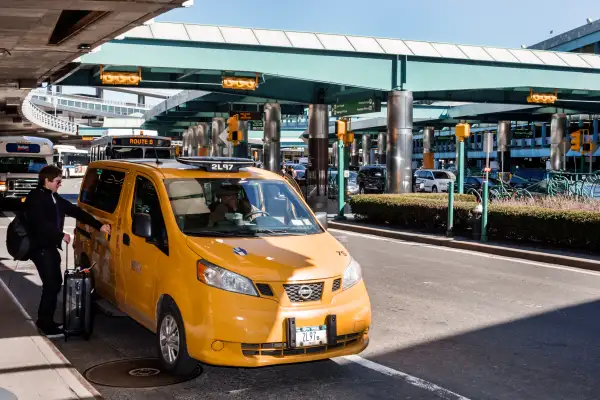The Only 3 Major Airports Where a Taxi is Cheaper Than an Uber

With numerous ridesharing apps available at one's fingertips, taxicabs have struggled to compete with the often low prices of companies like Uber or Lyft.
But is it always cheaper to take an Uber from an airport over a taxi?
Using estimates from Ride Guru, a rideshare and taxi service aggregator that bases its estimates on real-world prices, Money found it is always cheaper to take an Uber over a taxi at each of the top 25 busiest U.S. airports. But that's only if Uber is not experiencing surge pricing.
Surge pricing is when the baseline rate for a ride increases by surge intervals of .10, depending on supply and demand. 1.5x is quite a common surge rate; that would increase the fare for a $20 trip to $30, for example.
Surge pricing is highly localized and moves very fast, sometimes every 100 seconds. Pricing often skyrockets at peak times, such as Monday mornings or Friday afternoons – or even worse, at 2 a.m. after the bars close. But as several experts pointed out, it is especially hard to predict around airports.
Christo Wilson, a lead researcher on Uber surge pricing and an assistant professor at the College of Computer and Information Science at Northeastern University, says that “it is immediately obvious that airports are special.” He argues that pricing algorithms at airports are “clearly different than anywhere else” thanks to the bursty traffic patterns and different regulatory regimes at each one.
So when Uber starts to surge from its baseline rate, there are three airports where a cab becomes the better option.
•At New York’s JFK Airport, the approximate $63.80 for a cab is easily cheaper than a surging UberX, which costs $84 at a surge of 1.5x.
• A $22.80 cab from Boston’s Logan Airport is less expensive than an UberX surging by 1.5x ($26.3).
• Taxis at New York’s LaGuardia airport cost an estimated $42 and is still cheaper than an in-demand Uber: $51.4 when surging by 1.5x.
When Uber’s surge pricing goes above the 1.5x range, up to 1.7x for example, cabs become slightly cheaper at several additional airports: Dallas/Fort Worth International, Seattle-Tacoma International, Minneapolis-Saint Paul International, Philadelphia International, and Ronald Reagan Washington National.
It quickly becomes clear that for the airports located further outside the city, such as in Denver or Houston (George Bush Intercontinental), the savings from taking an UberX are significantly greater. The shorter rides are the ones that make more sense for passengers to take a cab – depending on the airport, designated pickups for ridesharing companies are often out of the way, and many people might not see the point of calling an Uber while walking past 50 taxis waiting at the curb.
Still want to take an Uber? Wilson recommends that although this may be hard to do at some airports, the easiest way to 'beat the surge' is to distance yourself from the crowds, or even wait a few minutes for demand to die down. This effort may be worthwhile in some cases, as savings from Uber become monumental in cities where car culture abounds and there isn't great accessibility to public transportation. Taking an Uber instead of a cab from the Los Angeles or Detroit airport, for example, can net you the biggest savings, at $37.
A note on methodology: Calculations were based on several assumptions: 1) using UberX as the most common type of Uber, 2) ignoring tolls to come up with proper comparisons, 3) no surge pricing to calculate the baseline fares, 4) light to medium traffic, and 5) estimates based on trips from the airport to the nearest city center. Our calculation for Newark airport is the only exception, with the trip to a nearby ‘city center’ going to Manhattan.